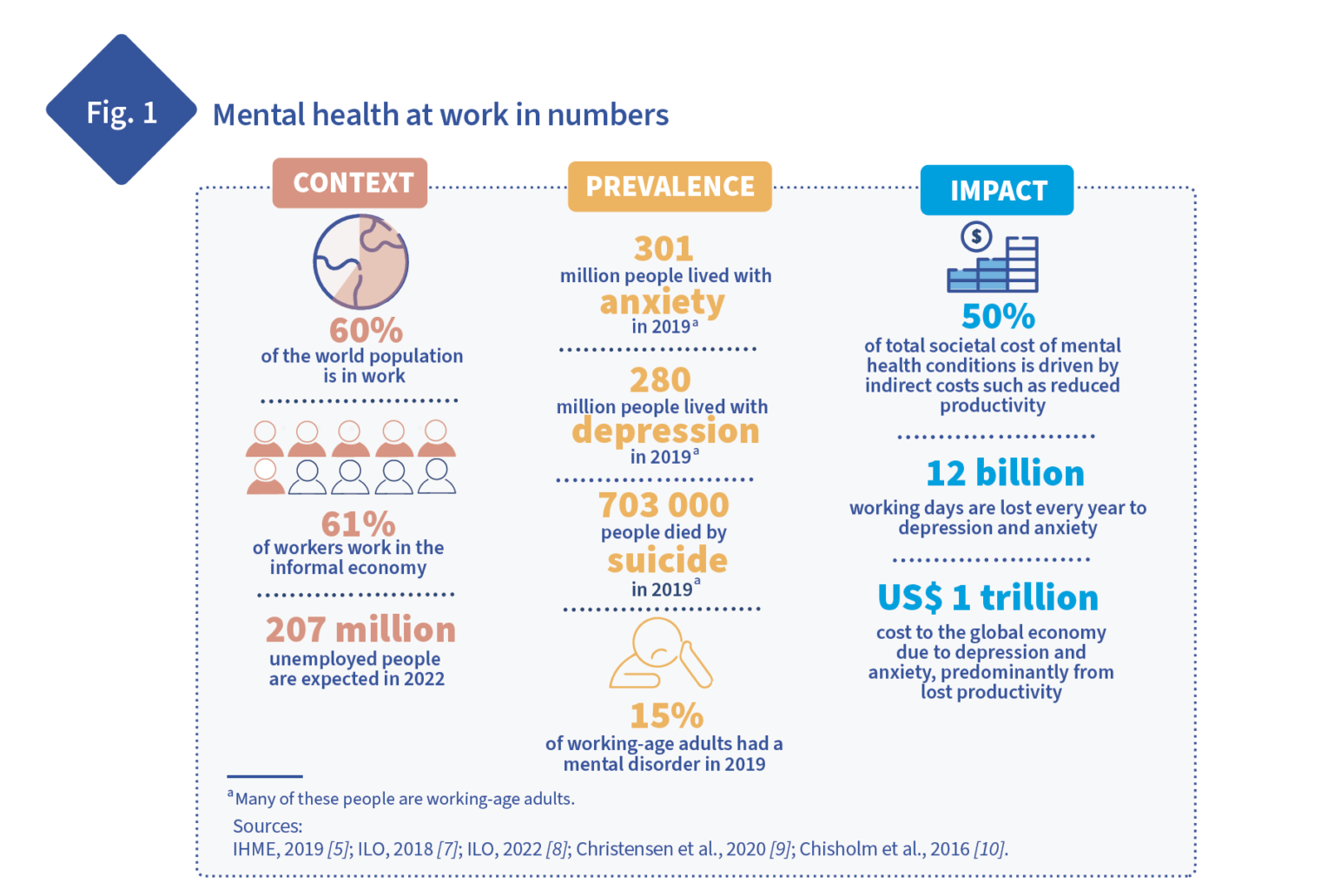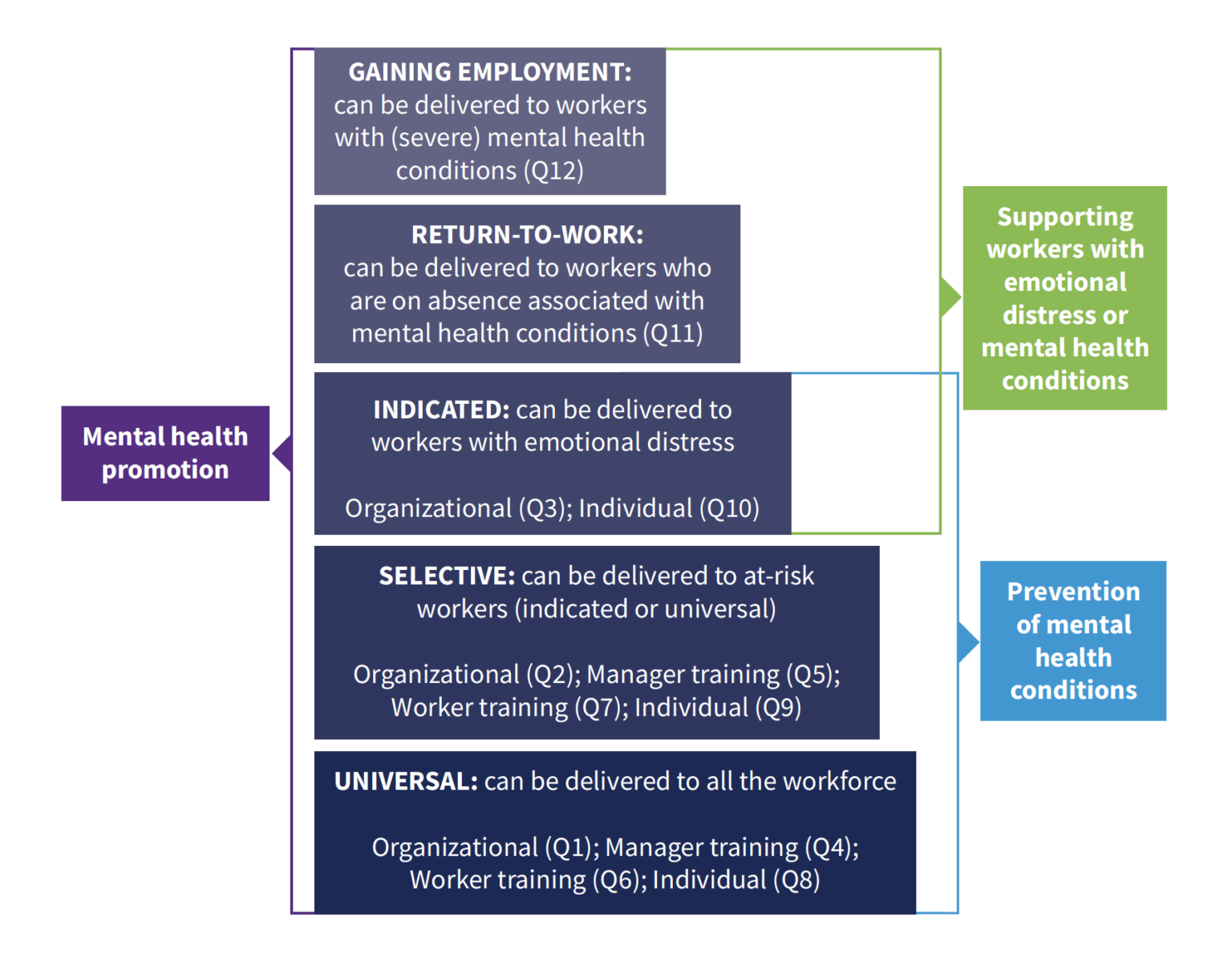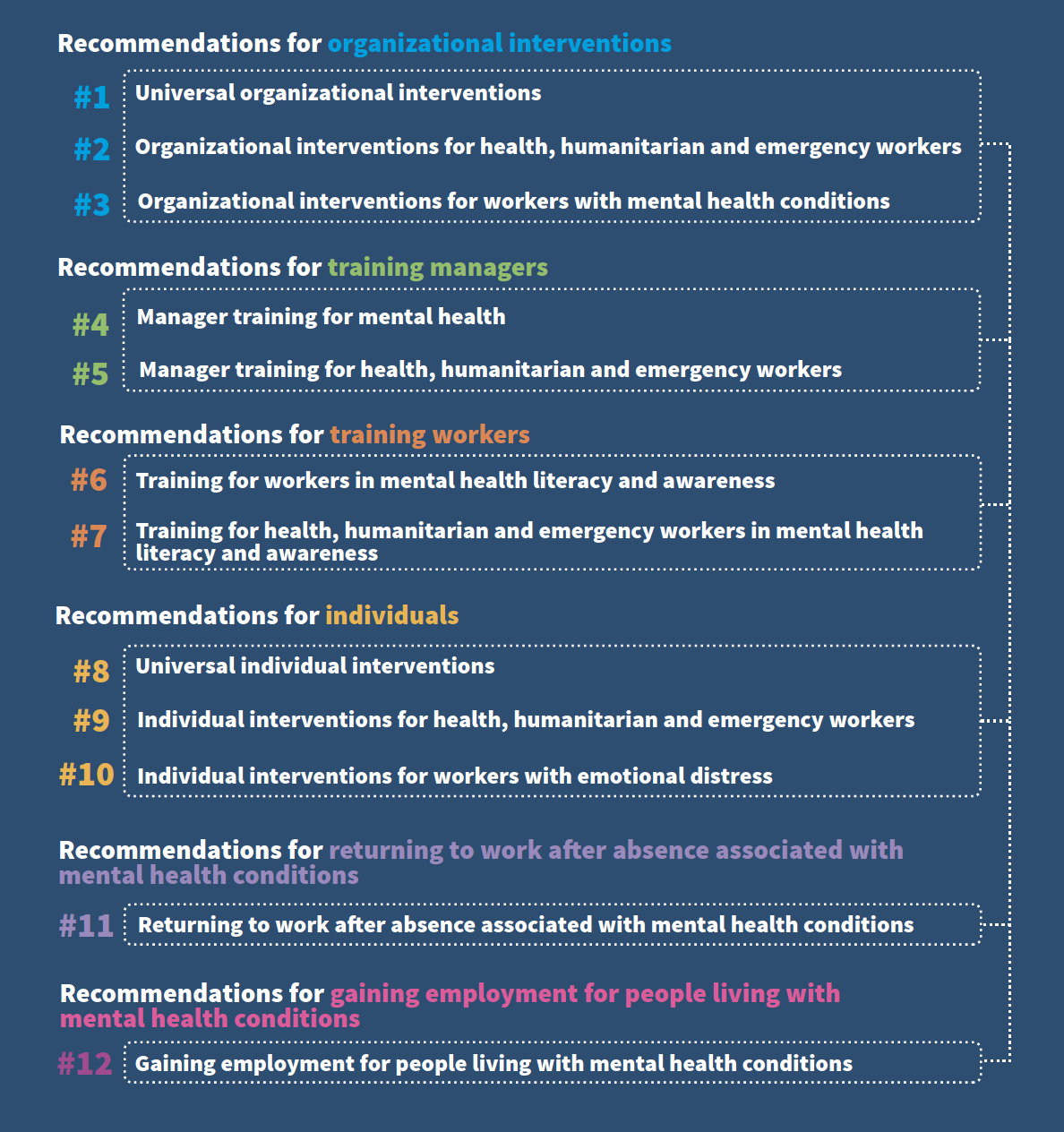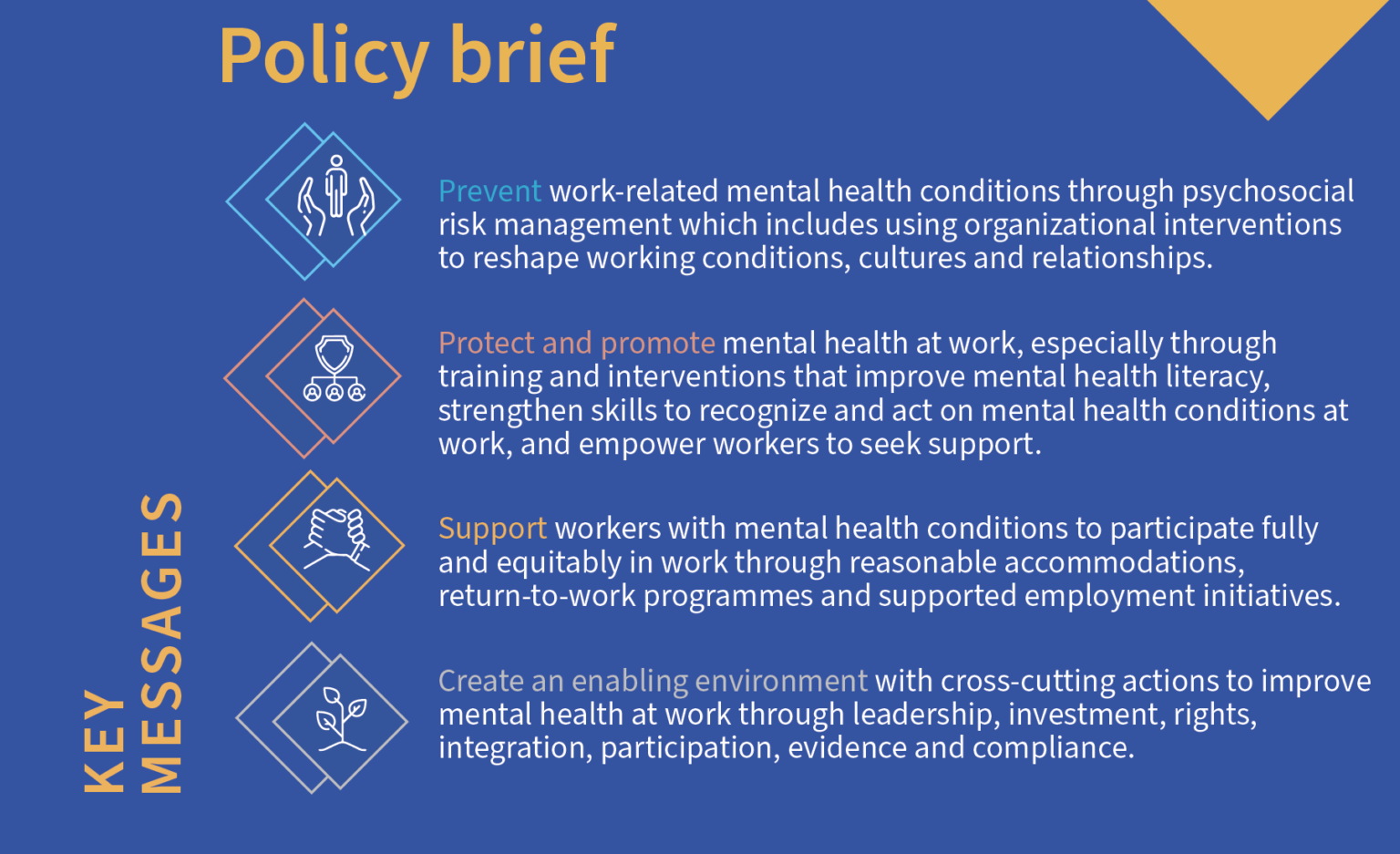Introduction
On 28 September 2022, the World Health Organization (WHO) released its first-ever global guidelines on mental health at work. The WHO guidelines were released in time for World Mental Health Month in October and have received praise on social media channels from practitioners in the fields of mental health, human resources (HR), and workplace health and safety (WHS).
The WHO guidelines on mental health at work are a welcome addition to the growing list of WHS legislation, mandatory national standards, codes of practice, and international standards that leaders need to be across to protect their people from psychosocial hazards and psychological injury, as well as reduce their organisational exposure to risk.
Breaking news: Since publishing that list, there has been more good news for workplace mental health. On 1 October, NSW became the first state in Australia to adopt the Model WHS Regulations for psychosocial risks, and on 14 October, Queensland announced its commitment to adopt the same regulations on 1 April 2023.
Why are the WHO guidelines on mental health at work important?
Similar to why ISO 45003 is important, the WHO guidelines are another affirmative step towards employee wellbeing because they expand the traditional workplace focus on physical health and safety to consider the equally important workplace need for psychological health and safety.
The guidelines give organisations the framework they need to lead from the front, before compliance is mandated.
“Managing mental health at work can appear challenging. But it should not be seen as onerous. Rather, it offers an opportunity for growth and sustainable development. Safe, healthy and inclusive workplaces not only enhance mental and physical health but likely also reduce absenteeism, improve work performance and productivity, boost staff morale and motivation, and minimize conflict between colleagues.”
—Soumya Swaminathan
WHO Chief Scientist
Source: WHO guidelines on mental health at work
The WHO guidelines are also a timely reminder that organisations have both a responsibility and an incentive to create safe and healthy workplaces, particularly if they are concerned about employee wellbeing, recruitment, retention, productivity, innovation, reputation fallout, and organisational resilience.
Do workplaces need this reminder?
Yes. According to our research last October:

Also, according to WHO and the International Labour Organization (ILO), an estimated 15 per cent of working-age adults had a mental disorder in 2019, and the cost to the global economy each year due to depression and anxiety (predominantly from lost productivity) is a staggering US$1 trillion.

What’s in the WHO guidelines?
The WHO guidelines on mental health at work provide evidence-based recommendations to promote an integrated approach to mental health in the workplace by:
- Promoting mental health;
- Preventing mental health conditions; and
- Enabling people living with mental health conditions to participate and thrive in work.
The recommendations cover:
- Organisational interventions;
- Manager training;
- Worker training;
- Individual interventions;
- Return to work; and
- Gaining employment.
There are three documents available for organisations and practitioners, as follows:
Document one: WHO guidelines on mental health at work
This comprehensive 134-page document spells out, step by step, the:
- Background;
- Recommendations;
- Key remarks;
- Evidence and rationale;
- Evidence-to-decision considerations, and
- More.
The following noteworthy diagram from the document shows the interventions addressed in the guidelines at different population levels:

Document two: Executive summary
The 14-page WHO guidelines on mental health at work: Executive summary summarises the 12 key recommendations of the WHO guidelines:

Document three: Policy brief
The 20-page Mental health at work: Policy brief, developed jointly by WHO and ILO, provides a pragmatic framework for implementing the recommendations of the WHO guidelines on mental health at work. It is in line with the recent addition by the ILO of occupational safety and health being a fundamental principle and right at work.
The document states: “This policy brief provides actions for governments, employers, employers’ and workers’ organizations, civil society and health service planners to prevent work-related mental health conditions, protect and promote mental health at work and support workers with mental health conditions.”
Key messages in the document are:
- Prevent;
- Protect and promote;
- Support; and
- Create an enabling environment.

Summary
The WHO guidelines on mental health at work are a welcome resource and set another standard for best practice, but they are not a magic wand.
To translate these new guidelines into meaningful progress, agents of change for organisational wellbeing need to embrace the guidelines, commit to positive change, and deliver on frameworks, policies, practices and promises that aim to improve the mental health and wellbeing of their people.
“When people have good mental health, they are better able to cope with the stresses of life, realize their own abilities, learn and work well and contribute actively to their communities. And when people have good working conditions, their mental health is protected.”
—Soumya Swaminathan
WHO Chief Scientist
Source: WHO guidelines on mental health at work
Want to learn more?
For more information on the WHO guidelines:
- WHO guidelines on mental health at work
- WHO guidelines on mental health at work: Executive summary
- Mental health at work: Policy brief
For more information on ISO 45003:
For more information on how Sonder can help your organisation reimagine safety, medical, and mental health support:
Mental Health Day/Month (worldwide)
| World Mental Health Day | World Health Organization | 10 October 2022 |
| World Mental Health Month | United Nations | October 2022 |
Mental Health Week/Month (Australia)
| Mental Health Week | QLD, WA, NT, TAS, VIC | 8-15/16 October 2022 |
| National Mental Health Month | Mental Health Foundation Australia | October 2022 |
| Mental Health Awareness Month | SA | October 2022 |
| Mental Health Month | NSW, ACT | October 2022 |
About Sonder
Sonder is a technology company that helps organisations improve the wellbeing of their people so they perform at their best. Our mobile app provides immediate, 24/7 support from a team of safety, medical, and mental health professionals – plus onsite help for time-sensitive scenarios. Accredited by the Australian Council on Healthcare Standards (ACHS), our platform gives leaders the insights they need to act on tomorrow’s wellbeing challenges today.



